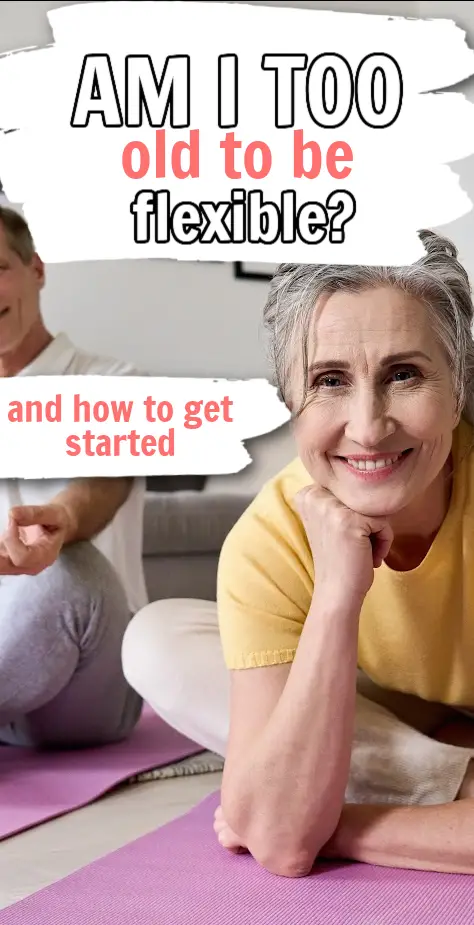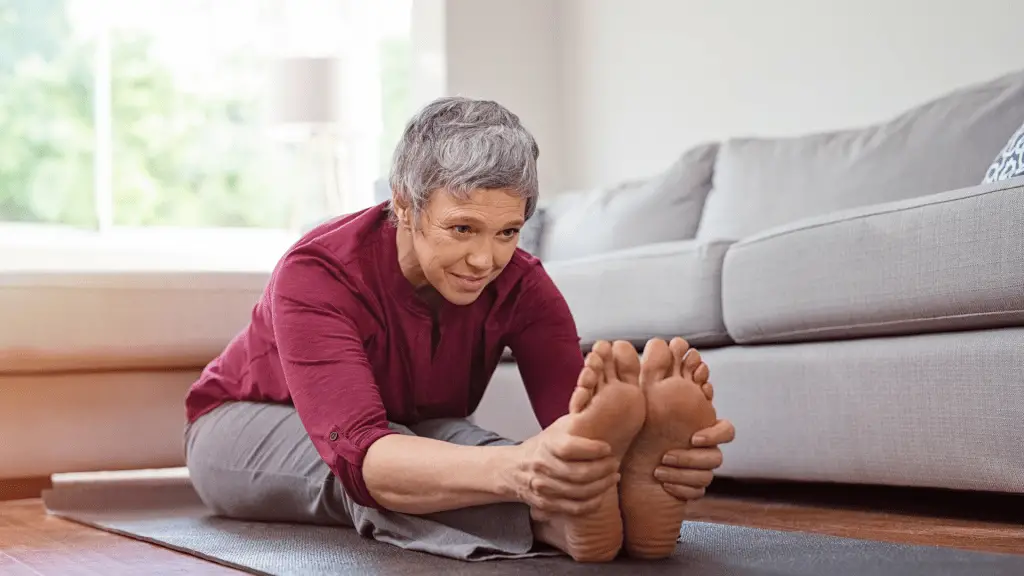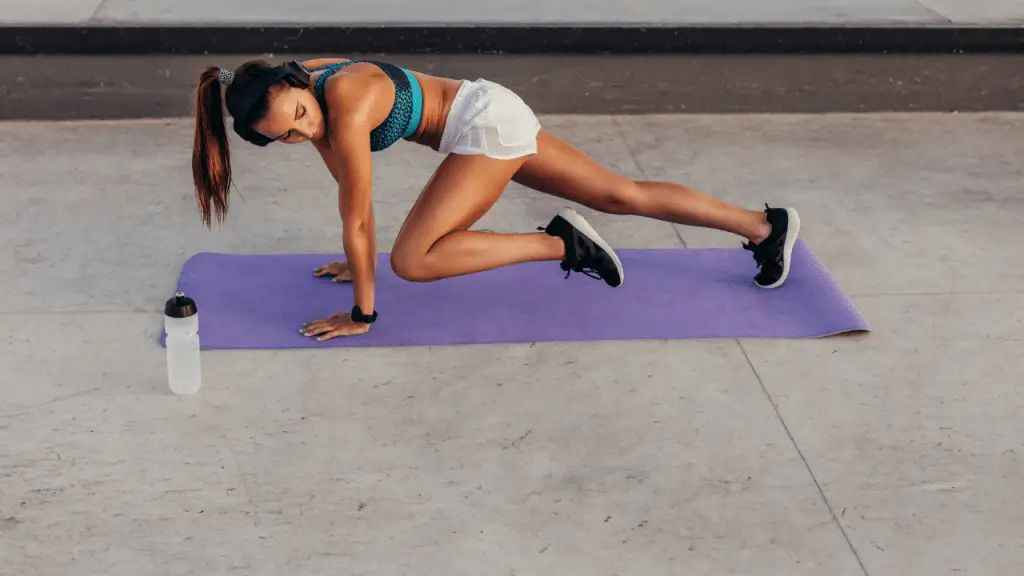So, you are wondering, Am I too old to be flexible? Do I need a whole blog post to answer NO!? I don’t, but there are some considerations to improve your flexibility later in life. I learned to do the splits and increase my overall flexibility at 44 without prior experience (even as a kid). In this post, I will explain how stretching improves your flexibility and share my best tips for older adults.
How Flexibility Works
Whenever you stretch a muscle, you use strength from the opposing muscle. The muscle you are stretching lengthens while the opposing muscle contracts. There is some controversy regarding what happens to the muscle that is stretched. The science isn’t definite about what happens when you stretch. At this point, the consensus is that stretching mostly causes your brain to adapt to increasing your range of motion. Some changes occur within your muscle-tendon unit (MTU), but stretching doesn’t cause your muscles to lengthen.
As a side note, I learned most of the information I am sharing with you in this post by taking a 2-hour workshop entitled Stretching Science 101. I highly recommend the workshop if you want to dig deeper.
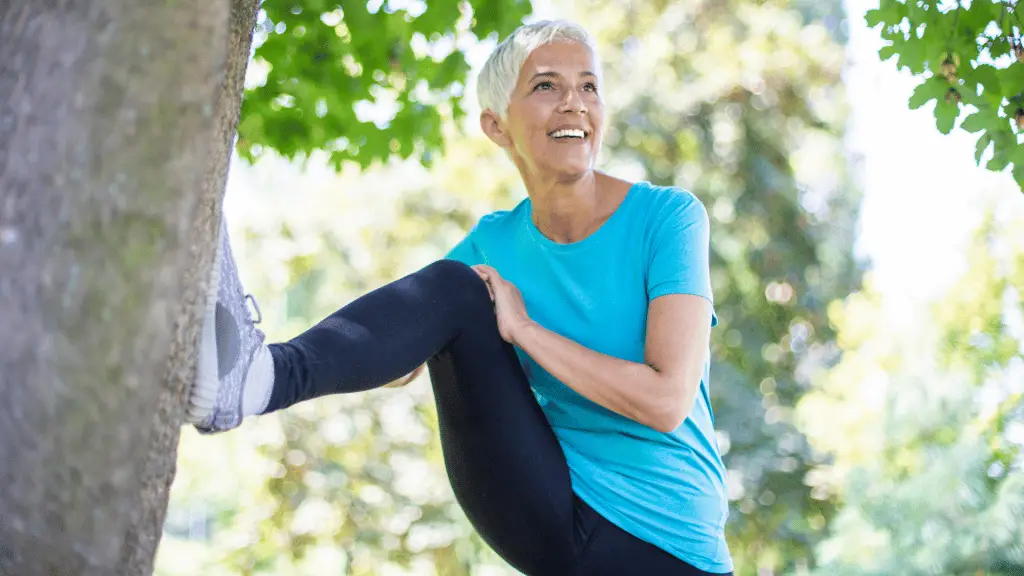
Stretch Tolerance
As you practice flexibility, your central nervous system becomes used to the sensations of stretching, and that’s called stretch tolerance. When your stretch tolerance increases, so does your range of motion. An interesting aspect of stretch tolerance is the crossover effect: Stretching one side of your body will increase your flexibility on the other side of your body. It further demonstrates that flexibility gains originate mainly from your brain.
Physical Changes in the MTU
Short-term stretching works through stretch tolerance. However, longer-term stretching programs (more than eight weeks) also create mechanical adaptations. One example of a mechanical change is viscoelasticity through stress/relaxation. It means you need less force to keep your muscle at a certain length because the internal resistance decreases.
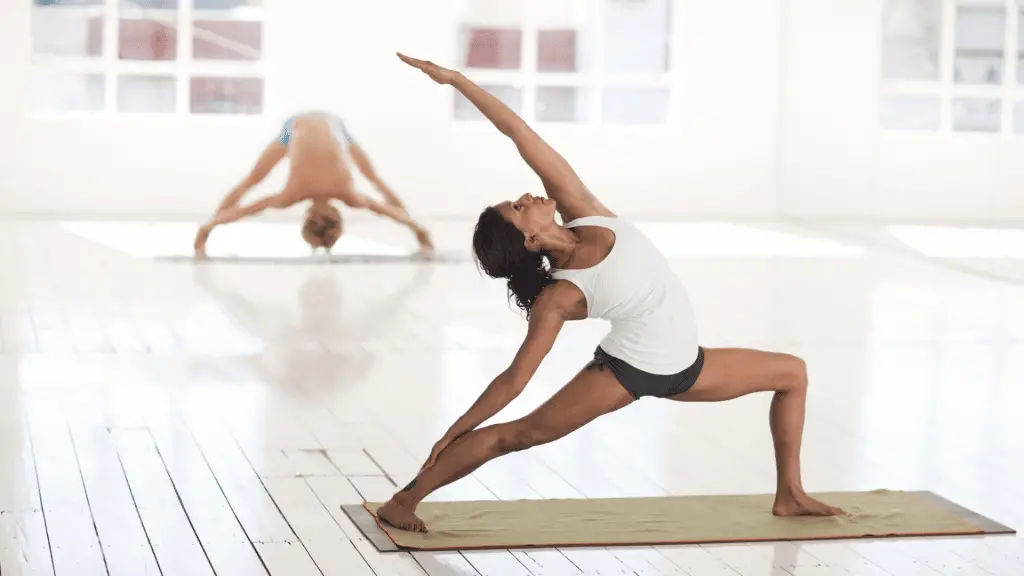
How Flexibility Changes As You Age
Children are more flexible until they are done growing (around 15-16 years old), and their bones become denser. Moreover, your tissues lose hydration as you age, which diminishes your flexibility. What does this mean for you as you ask the question Am I too old to be flexible? It means that although you are not too old, it will require more time and flexibility training than if you were younger. Just know that anyone, even 80-90-year-olds, can improve their flexibility. And the benefits are absolutely worth it.
Why You Want to Improve Your Flexibility as an Older Adult
Here are some flexibility benefits I have experienced as I have been training for flexibility in my forties:
- Improved energy
- Improved mood
- Increased confidence
- Improved posture
- Reduced aches and pains
I think there is a strong psychological component that helps you feel amazing from stretching. It is a time you can use to turn inward and meditate.
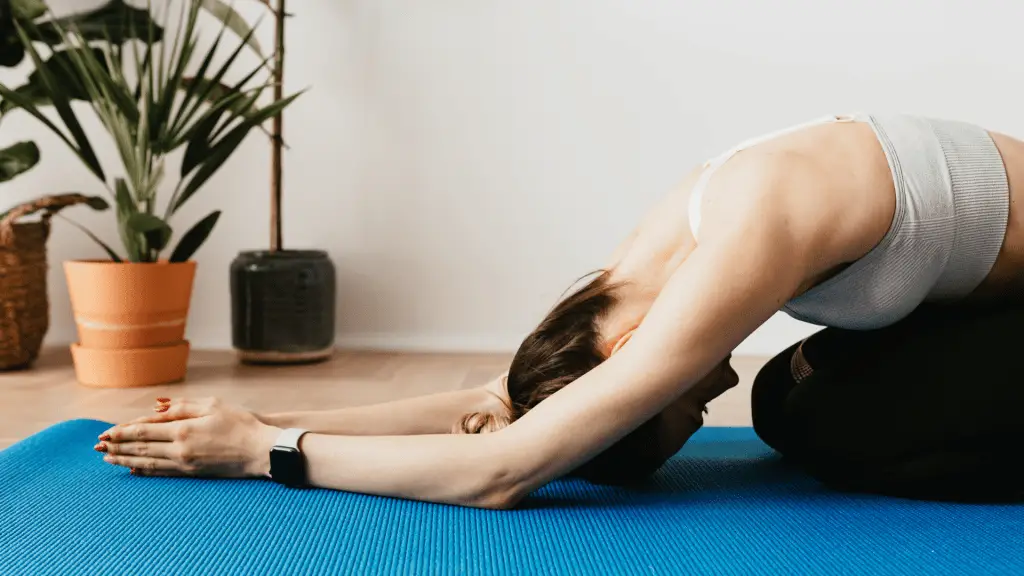
Improving Your Flexibility Strategically
If you wonder whether you are too old to be flexible, you are probably interested in learning the most effective way to improve your flexibility. It’s simple: know why you want to improve your flexibility and train accordingly.
1. Pick Your Flexibility Goal
Maybe you just want to improve your flexibility to facilitate your daily activities and reduce your risk of injuries. Or maybe you want to achieve some interesting yoga poses. Your flexibility program will vary according to your goals.
Overall flexibility
Even though I started by focusing on the splits, overall flexibility became my goal with time. With overall flexibility goals, you may start with a 15-minute schedule only 3 days a week. As you see your results, you may decide you want to achieve greater flexibility gains to get into some energizing yoga poses (like the wheel).
Achieving a Specific Yoga Pose
As you move on in your flexibility journey, if your goals become more strategic, you may also need a more strategic training plan. That’s exactly what happened to me. I started focusing on the splits using some of my favorite splits stretches and purchasing some splits programs. Gradually, I decided I wanted to get into other yoga poses that required more flexibility than I had. That’s when I created my full-body flexibility program. I wanted to follow a schedule to achieve all my goals. That’s how my Moving With Intention program was born.
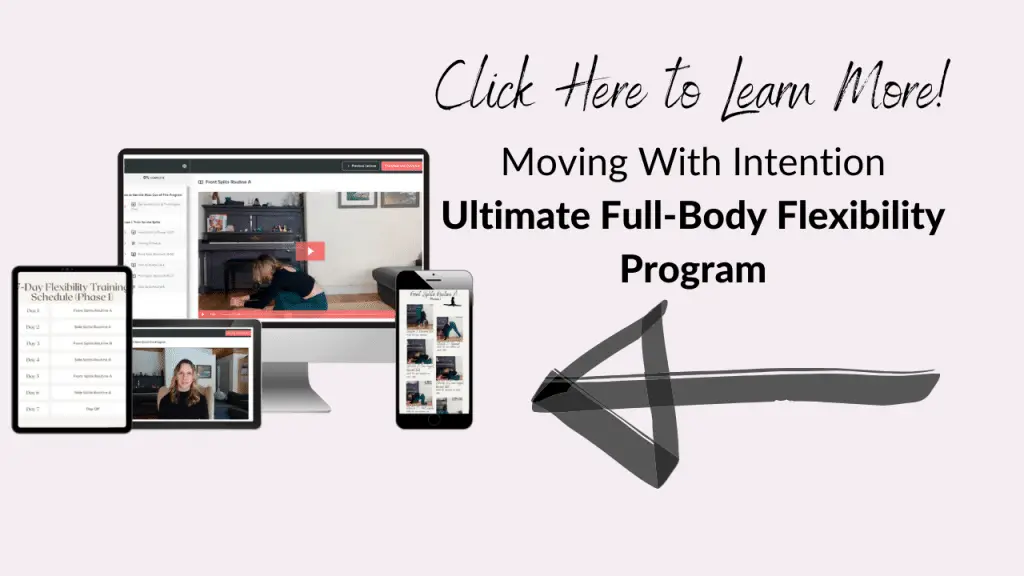
Athletic Performance
Your flexibility can improve your strength, power, and agility. If this is your main focus, you may find that active stretching is of benefit.
Balance and Injury Prevention
A long-term stretching protocol can potentially improve your balance and prevent injury (which is an excellent benefit as you get older). This benefit extends to daily living activities. A recent and fascinating study on the topic explains how improving your range of motion increases balance and reduces injuries. One reason is that flexibility enables you to exert more force for a wider range of movement.
Relaxation
Anyone who has practiced regular flexibility exercises knows their relaxing effect on the nervous system. According to a 2014 study, stretching relieves stress (they measured cortisol levels) even more than restorative yoga, a benefit that even extended to improve health outcomes for those with metabolic syndrome. As a side note, one theory about why stretching decreased stress more than restorative yoga was the social interactions. If you stretch at home like I do, you are losing this aspect. Fortunately, you will still notice an improvement in your overall well-being.
I created some free full-body stretching routines that you may enjoy if you would like to increase your balance, reduce your risk of injury, and get a sense of relaxation. Check out my Full-Body Flexibility Routine (With Handy PDF) and How to Improve Your Flexibility for Beginners.

2. Train Strategically According to Your Goal
I already touched on that a little as we talked about your flexibility goals, but I want to expand by giving you a little more info about active vs. passive stretching.
Active Vs. Passive Stretching
Many instructors out there believe that active stretching is superior to passive stretching to increase your flexibility (read How to Stretch to Do the Splits to see different active vs. passive stretches). However, the evidence is inconclusive. I personally prefer focusing on passive stretches (although I do use some active stretches) because my goals involve significant increases in range of motion (the splits, standing splits, king pigeon). If your goals don’t involve a large range of movement, you will do well with more active stretching and holding your stretches for only 30 seconds or so.
Since my goals involve increasing my range of motion, I typically hold passive stretches for 1-2 minutes. You decide what works best according to your goals.
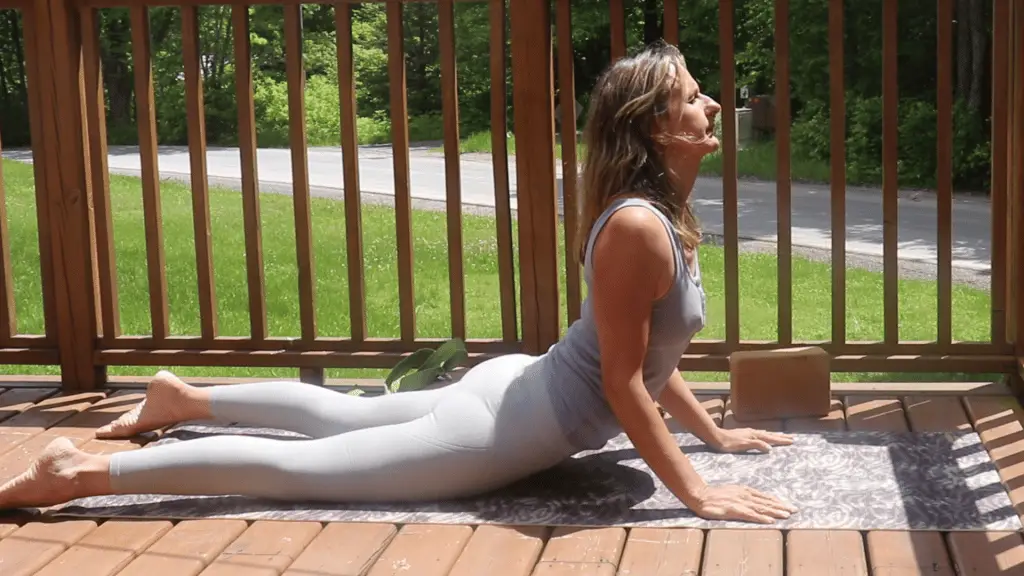
3- Stretch Consistently
For noticeable flexibility gains, you must be consistent with your stretching routine. For a beginner, 15-minute sessions six times a week are excellent. You will want to devote even more time to your training as you advance. Schedule about 30 minutes 6 days a week. Think you don’t have time? Try stretching while watching your favorite show!
Read How Long Should You Stretch to Increase Your Flexibility for more detailed information about the time required to achieve your flexibility goals.
Am I Too Old to Be Flexible Video
In Summary
So, are you too old to be flexible? Absolutely not! Not many mechanical changes have happened in your body since the age of 16 to make you less flexible. Moreover, once you figure out your flexibility training schedule, you will discover benefits that will decrease your risk of injury and improve your metabolic health, both super important as you get older.
